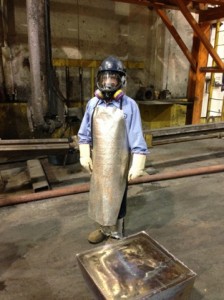
Worker in protective gear with a one-ton chunk of lead; an ingot that will now be sold.
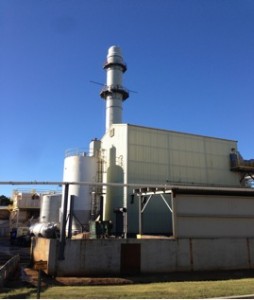
RSR battery recycling plant in Indianapolis
After visiting so many terrible, appalling, toxic backyard battery recyclers in the developing world, we thought we should see how batteries could be handled safely.
Last week we visited RSR Corporation’s lead-acid battery recycling plant in Indianapolis. RSR is one of the largest recyclers of used lead-acid batteries (ULAB), with three plants in the U.S., and others in Europe.
The Indianapolis facility has a reputation of being one of the best run and cleanest operations for battery recycling anywhere in the world. Bob Finn, the company’s CEO, and A J Williams, V.P. of Operations, kindly arranged to give us a tour.
The plant sits on a 30-acre site on the outskirts of Indianapolis. Over two hundred workers take thousands of used batteries each day and turn them into lead, which is sold back to battery manufacturers, for the most part. Almost all of the battery is recycled, including the plastic case.
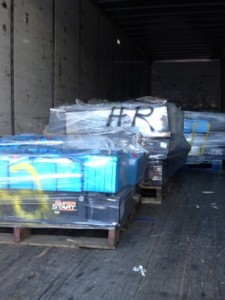

The batteries arrive shrink-wrapped from across the country in dozens of trucks that line up waiting for their turn to unload. While they are being stored, the batteries are kept on metal trays to contain any accidental leaks.
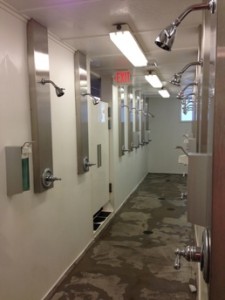
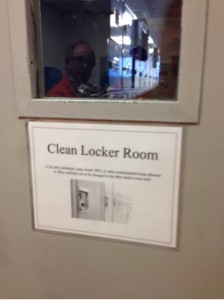
Once inside the facility, an enormous amount of effort goes into keeping lead out of the environment, and away from workers. For a start, workers must change their street clothes when they arrive, and wear protective gear whenever they are in the plant, including masks. All these are washed daily on site. Workers take a shower when they change into their street clothes too, so that they do not carry lead back to their kids at home.
Around the plant, using protective gear is mandatory, and you even need to vacuum your work clothes when you leave some areas of the plant.
Their health results are impressive. Workers are monitored for lead levels every three months, and on average are only measuring just above 10 micrograms/dl – truly a terrific result. Workers who have less than 17 micrograms/dl are given a bonus. (OSHA calls for action when a worker’s blood lead levels reach at least 30 µg/dL).

Twelve large fans work to create a negative pressure inside the facility, so no lead dust puffs out of the place. Instead, it is all circulated through a series of filters so that nothing escapes into the environment.
Emissions to the environment are also really low as the facility has spent millions on a state-of-the-art electrostatic precipitator. This device takes almost all the lead, SO2 and other pollutants out of the stack emissions. The equipment is not mandatory for lead smelters – RSR has chosen to do this because they think it is the right thing to do. It is a source of great pride for the firm.

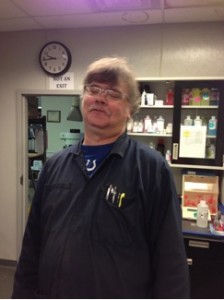
There are also complex pieces of equipment monitoring water effluent. The company tests all waste streams constantly, in a well-equipped laboratory with spectrometers and other gadgets.
Scott Strole (right) oversees the lab team to make sure everything is safe and clean.
The concern over pollution can be seen everywhere, from performance statistics and posters, to the attention that is paid to just keeping the floors well swept at all times.
It was an impressive visit, and we were glad to have the chance to see lead being managed safely, after so many visits to backyard smelters that looked like this…
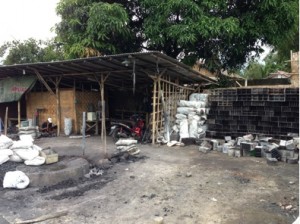 where people process lead waste like this..
where people process lead waste like this..
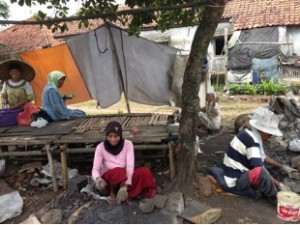 how can we help battery recycling in the developing world?
how can we help battery recycling in the developing world?
No one would expect a developing country to move immediately to the kind of performance I saw at RSR overnight. But such companies serve as examples of how lead, and lead-acid batteries can be managed safely. There are lessons to be learnt here, for GAHP (Global Alliance on Health and Pollution) countries slowly moving their lead-acid battery management toward safe processes.
The solution will be gradual, moving step-by-step, country-by-country. The basic process must be:
- Find a way to ensure batteries are only processed by formal, cleaner facilities, and incorporate incentives so that this happens with battery economics, not only with enforcement of regulations (which can be difficult, to say the least);
- Improve those formal facilities step by step, aiming for better controls each time;
- Clean up the legacy contaminated sites, once we can be sure they will not re-occur.
And all the time, remember why we do this. It’s for these children to be safe…




